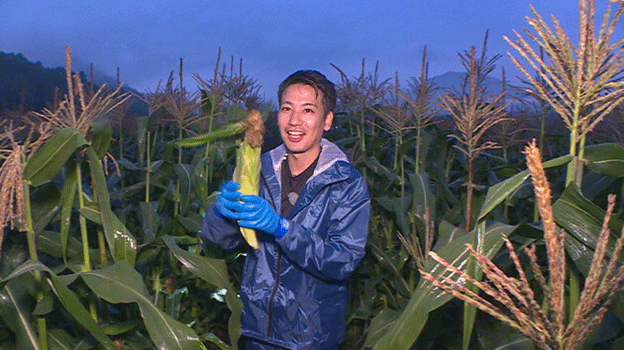In the mountainous region of Shinano Town, Nagano Prefecture, where tradition and modernity converge, corn farming plays a vital role in sustaining both the local economy and cultural heritage. Here, you will find farmers like an 87-year-old veteran who continues to cultivate the traditional variety “Kurohime Mochi Morokoshi” alongside the newer “Dokidoki Corn.” His dedication is a testament to the enduring spirit of Japan’s rural agricultural communities.
“Kurohime Mochi Morokoshi,” a sticky corn variety with deep historical roots, is emblematic of Shinano Town’s agricultural tradition. Known for its glutinous texture and slightly sweet flavor, this variety has been cultivated in the region for generations. However, like many traditional crops, it faces competition from more modern, high-yield varieties. Farmers in the area, including this 87-year-old, have adapted by integrating both traditional and innovative practices into their farming routines, ensuring that these heirloom varieties continue to be grown and appreciated.
The day of a typical farmer in Shinano Town starts early, often before dawn. By 4:30 a.m., fields are already buzzing with activity, as farmers focus on harvesting corn while it is still cool. Early morning harvesting, particularly for varieties like “Dokidoki Corn,” helps to lock in sweetness, a practice that contributes to the high quality of the produce. This corn is then prepared for sale at local markets, such as “Michi no Eki Shinano,” where loyal customers from nearby cities, like Nagano, eagerly await their chance to purchase directly from the farmers themselves.
In addition to harvesting, Shinano Town’s farmers face the ongoing challenge of pest control. Protecting their crops from pests, particularly those that can bore into the corn, is crucial. The elderly farmer’s expertise is evident as he meticulously instructs others, including curious outsiders, on how to properly apply pesticides to prevent insect infestations. Even at 87 years old, his dedication to safeguarding his crops remains unwavering, ensuring that each ear of corn meets his high standards.
The life of a corn farmer in Shinano Town is not all toil, though. After the workday comes a moment of respite—an opportunity to enjoy the fruits of their labor. Freshly boiled corn, harvested just hours earlier, provides a well-deserved treat, reminding everyone involved of the simple pleasures that come with farming. A visit to “Corn Street,” famous for its grilled corn, adds another layer to this quintessential Shinano experience, offering travelers a taste of the region’s agricultural heritage.
For farmers in Shinano Town, maintaining this balance between tradition and modernity is key to their continued success. While they honor their past through the cultivation of heritage crops like “Kurohime Mochi Morokoshi,” they also embrace new varieties and techniques that enable them to thrive in a changing market. This approach not only preserves their cultural identity but also opens up new opportunities for growth and sustainability in Japan’s agricultural future.
Conclusion: Shinano Town’s corn farmers are exemplars of resilience and adaptability in agriculture. By preserving traditional varieties and embracing modern techniques, they are safeguarding their cultural heritage while ensuring a sustainable future for local farming. The story of these farmers underscores the importance of combining time-honored practices with innovation to meet the challenges of contemporary agriculture.
Error




